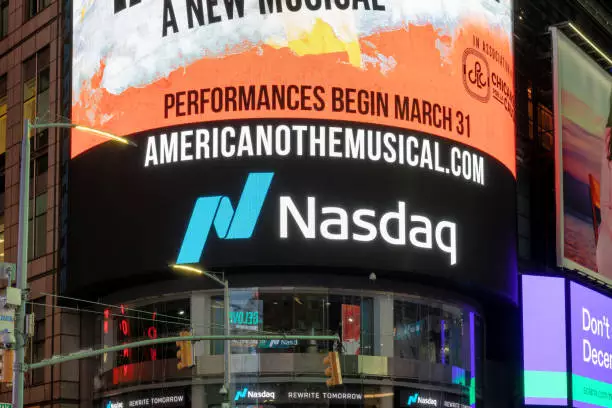The Nasdaq 100, a barometer for some of the most influential tech stocks, has recently showcased a volatile narrative that has drawn the attention of both traders and analysts alike. As of early April 2025, market breadth has demonstrated alarming weakness, with a diminutive percentage of component stocks trading above their crucial 20-day and 50-day moving averages. This performance coupled with a troubling increase in high-yield corporate bond spreads suggests that underlying economic conditions could be precarious. A scenario where implied volatility surges is emerging, which could contribute to an overall more tumultuous market situation.
Investors remain particularly attentive to the Nasdaq 100’s movements, especially after its staggering decline of 16% since the last analysis. This dramatic drop saw the index breach the critical support zone between 17,300 and 17,250, eventually testing the even more significant level of 16,590. A brief respite provided a minor rebound to close at 17,508, but the flying colors of optimism were short-lived as substantial resistance looms ahead.
Macro-Economic Pressures and Market Responses
Adding complications to the financial landscape are the geo-political tensions between the United States and China. The abrupt announcement by U.S. President Trump to suspend increased tariffs on certain countries—excluding China—has painted a somewhat more hopeful picture for American markets. However, the subsequent additional tariffs imposed on Chinese goods further inflates uncertainty. The market responded positively to the initial news, showcasing a buoyant leap across several indices, including remarkable gains in the Nasdaq 100.
The sheer magnitude of the Nasdaq’s 12% one-day gain on April 8 was a sensational event, marking it as one of the most significant single-day rallies in recent years. Despite this, traders approach the scene with skepticism, questioned whether this uptick represents a sustainable trend or merely a “dead cat bounce”—a brief and insignificant recovery in a broader downtrend. The underlying conditions—the persistently weak market breadth and unresolved trade issues—suggest that this optimism may not have solid grounding.
Indicators: What Do They Reveal?
As of April 9, the statistics paint an unflattering portrait for the Nasdaq 100; merely 32% of component stocks were trading above the 20-day moving average, with an even more concerning 15% above the 50-day mark. This inability of stocks to regain upward momentum above these moving averages indicates the fragility of the current market rally. Figures from financial visualizations, such as TradingView data, reinforce this narrative by highlighting that the index faces considerable hurdles as it seeks to reclaim its previous peaks.
The technical indicators are also sending mixed signals. An analysis of the daily Relative Strength Index (RSI) shows that after a brief exit from extreme oversold conditions, the momentum failed to break prior resistance. Most notably, the April 8 gain was met with a bearish reaction, indicating resistance at the critical 20-day moving average, pegged at around 19,290. Such technical barriers underline the ongoing vulnerability of the index, suggesting that bulls may not have the stamina required for a sustained rally.
Outlook: Navigating the Intricacies Ahead
Speculation is rife about where the Nasdaq 100 will head next. A daily close below the formidable support of 16,590 could spell disaster, triggering a potential cascade downwards to other critical levels poised at 15,820, 15,290, and ultimately, 14,060. In contrast, breaking through resistance levels—such as the pivotal 20,360—could shift the tide significantly, opening doors to higher resistance points. This dichotomy outlines a clear path for traders grappling with risk assessment.
The challenge remains in navigating this intricate labyrinth of technicalities and external pressures. With the market showing signs of a bumpy ride, one cannot completely dismiss the prospect of more extended declines. In this prevailing atmosphere, investment strategies should be rooted in caution, with a keen focus on emerging signs whether the bullish impulses are indeed indicative of a more enduring recovery or simply a transitory reaction to macroeconomic events.
Understanding the complex interplay between market sentiment, geopolitical volatility, and technical indicators will be paramount for investors as they endeavor to stake their claims amidst what appears to be an uncertain future for the Nasdaq 100.

